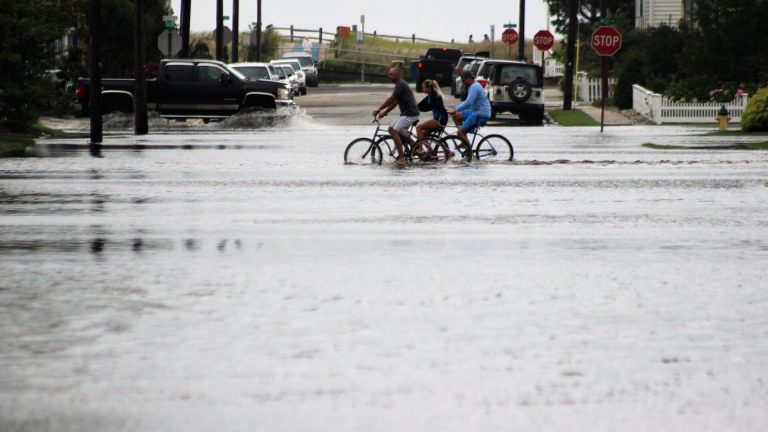This has been a busy month for Department of Environmental Protection rulemaking. On May 3, the DEP filed phase II of its new Resilient Environment and Landscape regulations, affecting coastal zones and likely to alter many of DEP’s land use rules.
The new rulemaking emanates from a conviction in Gov. Phil Murphy’s administration that state and federal regulations thus far have failed to account for projected impacts of climate change. They have been backward-looking, assuming the rearview mirror can provide an adequate base for projecting future needs.
The DEP maintains that the new approach is using the science of climate change to regulate future projects for resilience in the face of what is likely to be the coming impacts of climate change.
On May 10 DEP Commissioner Shawn LaTourette held a media briefing on the new rulemaking. In a 10-day period from May 20 to 29, the agency held a series of four webinars on various aspects of the new rulemaking.
A brief examination of those four webinars helps to shed light on the scope of the new proposed regulations, which are expected to be published in the New Jersey Register by July 1. At that point the state has one year in which to adopt the rules.
Adoption in July 2025 would be just months before voters go to the polls to select a new governor.
REAL Sea Level Rise and Inundation Risk Zone
The first of the webinars dealt with sea-level rise and the need for defining a new inundation zone.
In the briefing LaTourette said the new regulations were developed to adapt to the already unavoidable impacts of climate change. In terms of sea-level rise, the projection the DEP uses as one of those unavoidable impacts is a 17% chance for a rise of 5.1 feet by the end of the century, from a Rutgers University scientific analysis done in 2019.
Construction now with that outcome in mind means, in the DEP rules, an increase of 5 feet to coastal flood elevation. When a 1-foot safety factor is added, that would mean 6 feet above the Federal Emergency Management Agency’s 100-year flood elevation. The rules would apply to new development, redevelopment and substantial improvement, using 50% of the property value as a definition of substantial improvement.
The inundation zone will expand under the new rules. The definition of the inundation zone used by DEP is areas of permanent standing water all day or twice a day with tides. The DEP’s Vince Mazzei said that 16% of New Jersey is currently in the FEMA mapped floodplain and predicted that expanding the flood inundation zone will add 1.5% to the FEMA number, which is for the state as a whole.
The increase is likely to be much more significant in Shore communities.
When asked by one of the 375 people online for the webinar if selection of 5 feet as the addition to flood elevation was still in line with scientific projections, Mazzei said there is a greater worry that 5 feet is not enough than that it is too much. The DEP’s Katrina Angarone reiterated several times the DEP conviction that the new regulations are based on the best science available.
Several times during the discussion the DEP made clear that the new regulations do not define any no-build zones. It is, they maintain about knowing the risk in constructing resilient structures.
Real Environmental Enhancements
The new regulations, being reviewed by the Office of Administrative Law, will, the DEP’s second webinar said, modernize New Jersey’s environmental land use rules to respond to climate change.
The science says, according to the DEP, that climate change affects surface and groundwater, with more intense rain events increasing contaminants. Other worries include loss of habitat for freshwater fish, increasing temperature problems for reptiles, and climate facilitation of the expansion of invasive species. A major environmental impact is expected with bird species, where 29% of the species are vulnerable to climate change.
The webinar was a significant departure from the heavy emphasis on structure development that dominated much of the first webinar; the emphasis was on increasing vegetation to protect environmentally sensitive areas. The new rules are designed to increase protection of species habitat through more stringent design standards. The DEP says the rules will promote nature-based solutions such as living shorelines instead of an increased reliance on hard-surface protections like bulkheads and sea walls.
Under the new regulations there will be a need for clear justification that any proposed wetland impacts are necessary. This will be true even when the impacts meet other rules criteria. Proximity to wetlands may also lead to a need to remove impervious surfaces.
Flood-hazard rules will also lead to placing riparian zones on the non-oceanfront side of barrier island complexes.
Coastal Climate Protection
The third of the DEP webinars acknowledged that the state’s coast is a significant area for its population, a critical element of its economy, and an important hallmark of its culture. Given the state’s susceptibility to the adverse impacts of climate change and the need for alternative renewable sources of energy, this area of the new regulations speaks to facilitating offshore wind farm development by allowing the installation of transmission cables associated with wind farms.
This is also where the DEP rules will intersect with the State Planning Commission concerning development. Standards in the rules will ensure consistency of State Planning Commission actions with the Coastal Area Facility Review Act. The interaction of the standards and the planning commission actions is meant to ensure what the DEP terms a “common-sense approach to siting development.”
The DEP will encourage nature-based solutions for shore protection and offer a new general permit for nature-based research projects.
Stormwater Management
The fourth webinar dealt with stormwater management. The science underpinning the rulemaking relies heavily on the 2020 New Jersey Scientific Report on Climate Change. That study projects an increase in annual precipitation in the state of between 4% and 11% by 2050. Such an increase in rainfall will lead to growth in the size and frequency of floods, pressure on sewer systems and negative impacts on surface and groundwater quality, the study found.
The DEP says that extreme rainfall increased in New Jersey at a faster rate than in the rest of the country over the last 50 years.
The rulemaking assumes that stormwater management practices based on historic patterns will increasingly be unable to meet the impact of new storm events. The new rules were built on the Island Flood Protection Rule adopted last year by further addressing the impacts of climate change on stormwater runoff.
Among the changes is one that will require reconstructed motor vehicle surfaces to receive the same water quality treatment now required only for new motor vehicle surfaces. The rules will impact the handling of runoff discharged into existing or proposed stormwater conveyance systems, require actions to reduce runoff volumes, incorporate climate resilience planning in municipal stormwater master plans and amend the definition of major development to eliminate gaps in the level of protection for water quality and flood prevention.
All of the webinars are available for public viewing on the DEP website.
What Does It All Mean?
The new regulations are part of New Jersey’s Protecting Against Climate Threats initiative directed by Gov. Phil Murphy’s Executive Order 100 in 2020. They represent a comprehensive update of land resource protection rules and are meant to address existing and, most importantly, future impacts of climate change.
The state says it is using a science-based approach to project the negative impacts of climate change so that its rulemaking can result in better adaptation to climate impacts that can no longer be avoided.
LaTourette explains the state’s approach as one that encompasses two channels of climate policy. The first has a focus on decarbonization and the elimination of climate pollutants. The second, which incorporates the new Phase II regulations, is focused on adaptation to the unavoidable impacts of climate change.
Murphy says that the new rules reflect the best available science specific to New Jersey and the most appropriate policy pathways for protecting lives and property.
What it means for communities along the state’s shoreline is a significant new emphasis that developers, redevelopers and individuals engaged in substantial improvements must place on what the science says will be future factors impacting current projects.
The permitting process will change, as will the ability of the DEP to track authorizations and permits from the start of construction projects to completion.
The rule package will most likely be finalized in the summer of 2025 with changes to existing flood hazard, stormwater, coastal zone and freshwater wetlands regulations.
Contact the reporter, Vince Conti, at vconti@cmcherald.com.









